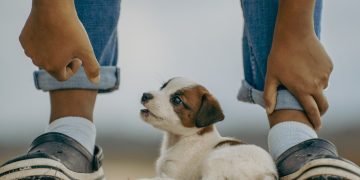As pets age, their bodies undergo changes that can impact their mobility and overall comfort. Joint health is a significant concern for older pets, as conditions like arthritis, hip dysplasia, and general wear and tear on joints become more prevalent. Ensuring that your pet’s joints stay healthy and functional is essential for maintaining their quality of life. This guide explores the causes of joint problems, signs to watch for, and effective strategies to support joint health in older pets.
Understanding Joint Health in Pets
How Joints Work
Joints connect bones and allow for movement. They are cushioned by cartilage and lubricated by synovial fluid to reduce friction and absorb impact. Over time, these components can deteriorate, leading to pain and stiffness.
Common Joint Issues
- Arthritis: Inflammation of the joints causing pain, stiffness, and reduced mobility.
- Hip Dysplasia: A genetic condition where the hip joint doesn’t fit properly, leading to degeneration.
- Luxating Patella: A condition where the kneecap slips out of place, common in small dog breeds.
- Degenerative Joint Disease: Chronic deterioration of cartilage leading to joint instability.
Signs of Joint Problems
Physical Symptoms
- Limping or Favoring a Limb: Noticeable lameness or reluctance to use a specific limb.
- Stiffness: Difficulty getting up after rest or hesitation to move.
- Swelling: Visible or palpable swelling around the joints.
Behavioral Changes
- Reluctance to Exercise: Reduced interest in walks, playtime, or climbing stairs.
- Irritability: Discomfort may cause changes in temperament or increased aggression.
- Frequent Resting: Your pet may tire more easily or prefer lying down over activity.
Postural Changes
- Difficulty Sitting or Lying Down: Struggles to find a comfortable position.
- Altered Gait: A noticeable change in how your pet walks, such as a stiff or unbalanced stride.
Causes of Joint Problems in Older Pets
Aging
- Natural wear and tear on joints and cartilage over time.
Obesity
- Excess weight places additional stress on joints, accelerating their deterioration.
Genetics
- Certain breeds are predisposed to joint issues, such as Labrador Retrievers (hip dysplasia) or Dachshunds (spinal problems).
Previous Injuries
- Past injuries, such as fractures or ligament tears, can increase the risk of joint problems later in life.
Inflammatory Conditions
- Chronic inflammation from autoimmune diseases or infections can contribute to joint degeneration.
Supporting Joint Health
Diet and Nutrition
Balanced Diet
- Feed your pet a high-quality diet that supports overall health and maintains an ideal weight.
Joint Supplements
- Glucosamine and Chondroitin: Help maintain cartilage and reduce inflammation.
- Omega-3 Fatty Acids: Reduce joint inflammation and support mobility.
- Green-Lipped Mussel: Contains nutrients that promote joint health.
- MSM (Methylsulfonylmethane): Supports connective tissue repair and reduces pain.
Prescription Diets
- Consult your veterinarian about therapeutic diets formulated for joint health.
Exercise and Mobility
Low-Impact Activities
- Swimming: Excellent for building strength without stressing joints.
- Gentle Walks: Short, frequent walks to keep your pet active without overexertion.
- Playtime Adjustments: Opt for activities that don’t involve jumping or sudden movements.
Consistent Routine
- Maintain regular exercise to prevent stiffness but avoid overdoing it.
Physical Therapy
- Work with a certified animal physical therapist to create a tailored exercise plan.
- Techniques like massage, stretching, and hydrotherapy can improve mobility and reduce pain.
Home Modifications
Comfortable Bedding
- Provide orthopedic or memory foam beds to cushion joints and reduce pressure points.
Accessibility Aids
- Use ramps or stairs to help your pet reach furniture or navigate elevated areas.
- Place non-slip mats on slippery floors to prevent falls.
Temperature Control
- Keep your pet warm, as cold weather can exacerbate joint stiffness.
- Use heating pads or warm blankets to soothe sore joints.
Medical Interventions
Pain Management
- Non-Steroidal Anti-Inflammatory Drugs (NSAIDs): Commonly prescribed to reduce inflammation and pain.
- Analgesics: Medications to manage pain without addressing inflammation.
Alternative Therapies
- Acupuncture: Stimulates nerves and reduces pain in chronic conditions.
- Laser Therapy: Promotes healing and reduces inflammation in joints.
Surgical Options
- In severe cases, surgery such as joint replacement or arthroscopy may be necessary.
- Consult your veterinarian or a veterinary orthopedic specialist for guidance.
Preventing Joint Problems
Weight Management
- Keep your pet at a healthy weight to reduce strain on joints.
Regular Exercise
- Encourage consistent, moderate activity to maintain joint flexibility and muscle strength.
Early Detection
- Schedule regular veterinary checkups to identify joint issues before they progress.
- Monitor your pet for subtle signs of discomfort or changes in mobility.
Monitoring Progress
Regular Assessments
- Keep track of your pet’s mobility, pain levels, and overall activity.
- Use a journal or app to record changes and share updates with your veterinarian.
Adjusting Care Plans
- Modify exercise routines, diet, or medications based on your pet’s needs.
- Stay proactive in addressing new symptoms or challenges.
Supporting joint health in older pets requires a combination of proper care, preventive measures, and medical attention. By recognizing early signs of joint problems and implementing strategies to manage their condition, you can enhance your pet’s quality of life and ensure they remain active and comfortable in their golden years.












